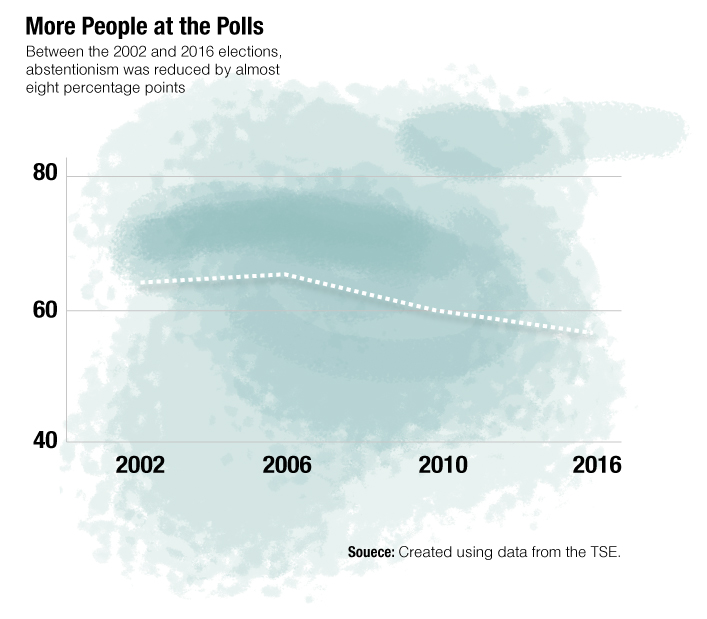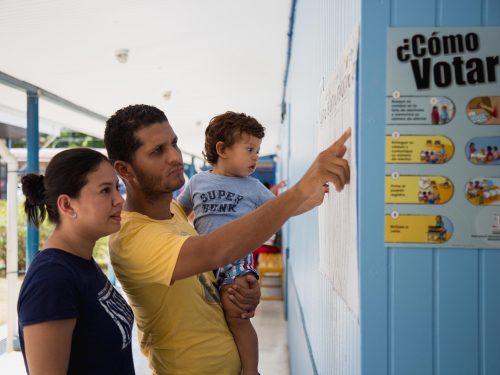
If someone told you that Guanacaste turns out to vote for its mayoral candidates more than any other province in the country, would you believe it?
The Voice of Guanacaste analyzed statistics from the Supreme Electoral Tribunal (TSE) for the last four electoral periods (2002, 2006, 2010 and 2016) to understand where we are in municipal political history. In addition, we looked for elements that give us a glimpse of the political future of the province from its local governments.
What we found is a Guanacastecan electorate that votes more and more in the elections, a dominant National Liberation Party (PLN) but with a partisan plurality creeping up that threatens to take center stage, and a political structure that plays against women at the head of the local governments’ top offices.
The 2020 municipal elections in Costa Rica will be held on Sunday, February 2 to elect mayoral officials, council members, syndics and district council representatives. Here we present five points to analyze.
1. Less Voters Abstaining
Political Scientists Predict Trend Will Continue to Decline
In Guanacaste, more and more people choose to vote. While in 2002, 64% of the electorate decided not to go to the polls, in 2016 that percentage was reduced to 56%.
Political scientist and coordinator of the National University’s (UNA) joint analysis program, Carlos Carranza, affirmed that the path toward greater participation began when municipal elections were separated from national ones in 2002, allowing the population to become more involved in the process and to understand the functions typical of a local government.
Although the figure remains high, according to Carranza and three other analysts consulted, there is a clear pattern that suggests that the amount of voters abstaining will continue to decline for the 2020 elections.
“The population sees that their participation is relevant and begins to feel closer to the local government than to the national one,” he said.

2. Green and White
PLN Is the Historic Winner in Municipal Elections in Guanacaste
The PLN won 61% of the mayoral positions of Guanacaste in the last four municipal elections.
Political analyst Gustavo Araya explained that the 68 years of the party’s existence allows it to have an effective electoral engine that mobilized the majority of voters in the province.
While the total electorate only grew 47% between 2002 and 2016, the votes for the Liberation party increased 114%, according to figures from the Electoral Court (TSE in Spanish).
But its historical leadership will be tested in 2020. The party will face many more local and national parties in the game, in addition to evangelical parties.
To Araya, the permanent presence of these faith-based parties in the communities during services is one of the greatest threats to the PLN.
“These parties have a different logic because they are based on people’s faith and are very close to the communities. That’s where traditional parties can lose a lot,” Araya said.

3. Fight Beyond Bipartisanship
Cantonal Parties Emerge in the Variety of Options
 During four electoral periods, only eight political parties have succeeded in snatching a mayoral position in Guanacaste away from the PLN and PUSC.
During four electoral periods, only eight political parties have succeeded in snatching a mayoral position in Guanacaste away from the PLN and PUSC.
The political scientist of the State of the Nation program and the Center of Political Studies Research (CIEP), Ronald Alfaro, indicated that the country has been consolidating a multiparty model, which is already reflected within the municipal councils.
“In the end, the mayor has to govern with a fragmented council, and that is a big challenge. It is like what happens nationally with the president of the Republic and the Legislative Assembly,” said Alfaro.
For the 2020 elections, the number of parties available will continue to multiply, which means new leaderships could arise. In Guanacaste, come February, about eight cantonal parties will vie for one mayor’s office, the highest number in history.
Nonetheless, the new groups that emerge face not only the historical loyalty of the people towards traditional parties, but also having to find economic resources and even media presence to be able to stand out as an option to constituents.
4. Guanacaste Votes More in Municipal Elections
Analysts Believe Voters Have More Confidence in Local Governments
No other province in the country votes more in municipal elections than Guanacaste. It has been that way since the electoral period of 2002 and becomes more evident when the province is compared with the center of the country.
For example, while 56% of Guanacastecans decided not to vote in 2016, the figure in San Jose was almost 70% (the highest rate of abstentionism for that period by province). To analysts, there is no clear explanation that allows us to understand the phenomenon of abstentionism. However, the disenchantment of the electors with the central government and the incumbent assemblies is the first indication.
The greater participation in municipal elections could be due to closeness with its representatives. “Guanacaste is marginalized in Costa Rican political processes. I think Guanacastecans feel that if they want to achieve something, they achieve it from the municipality,” said historian Gina Rivera, former Liberia council member and a professor at the University of Costa Rica (UCR).

5. A Policy that Relegates Women
Mayor’s Positions Will Continue to be Taken by Men
In almost two decades (2002-2020), only four women have held the position of mayor in Guanacaste. By contrast, 40 men have led municipalities during that same period. As a result, women have practically only held vice mayor positions.
CIEP gender researcher Marcela Piedra said that this inequality takes shape within the leaders of the political parties, which are still mostly men. “So, in reality there is no gender awareness of more women in popular election positions in political parties.”
Political analysts do not anticipate that we will write a different story on February 2, 2020. First, because the parties continue to give preference to men and secondly, because the TSE magistrates— with the exception of Maria Eugenia Zamora— postponed the requirement of “horizontal parity” in mayor’s offices until the 2024 elections.
That term refers to parties proposing the same number of men and women as mayoral candidates. What they did approve was using this method in the case of council members and district representatives.
“It is a decision that postpones the search for equality four more years [in the mayor’s offices],” commented Felipe Alpízar, political scientist and former director of CIEP.
Since the last elections, the TSE has only required “vertical parity” from the parties, that is, if a man leads the ballot, a woman should be the candidate for the first vice mayor’s position, and vice versa. However, this formula is not enough to bring them closer to leading roles, since the functions of the vice mayor’s position are defined by the mayor.
In fact, an analysis of the TSE magistrates showed that horizontal parity in council members does not guarantee that more women will be elected either. Since there are more cantonal parties, and the majority put a man first on the ballot, women are less likely to become council members.
Alejandra Larios, current council member in Liberia and candidate for mayor for the PLN, said that it is clear that politics is a rocky terrain for women, not just in being in political battles but also in reaching a position. “There are meetings where only men are addressed, as if we women were not important,” she added.
The mayor of Abangares, Anabella Matarrita, agrees that these scenarios are common. “Yes, they have minimized me, but I have a strong character and I am also low profile, so those things do not end up affecting me.”
Political scientists and female politicians believe that those who occupy popularly elected positions and the voters themselves should promote female leadership, which in itself is strong in the communities.
“Women are active in their community organizations, just not necessarily within the political parties, and what is worse: they probably participate but they are not given decision-making places,” said the director of the UCR doctorate of government and public policies, Maria Jose Cascante.

Alejandra Larios, current council member in Liberia and candidate for mayor for the PLN, said that it is clear that politics is a rocky terrain for women, not just in being in political battles but also in reaching a position. “There are meetings where only men are addressed, as if we women were not important,” she added.
The mayor of Abangares, Anabella Matarrita, agrees that these scenarios are common. “Yes, they have minimized me, but I have a strong character and I am also low profile, so those things do not end up affecting me.”
Political scientists and female politicians believe that those who occupy popularly elected positions and the voters themselves should promote female leadership, which in itself is strong in the communities.
“Women are active in their community organizations, just not necessarily within the political parties, and what is worse: they probably participate but they are not given decision-making places,” said the director of the UCR doctorate of government and public policies, Maria Jose Cascante.







Comments